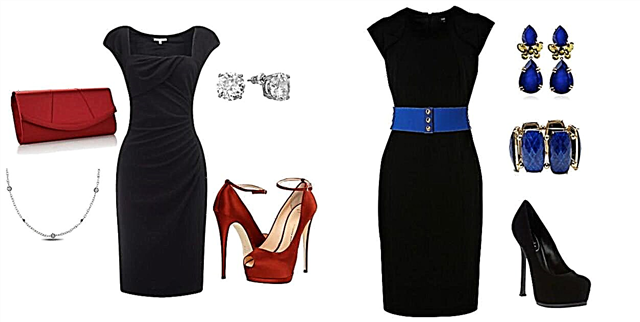The layout of the details of the future product on the fabric is a subtle art that anyone can master. Our guide will help you deal with the most difficult aspects!

Preparation for cutting
Before proceeding with the layout of the pattern on the fabric, you should conduct wet-heat treatment of the material. If the WTO is not carried out, in the future the finished product can bring a number of unpleasant surprises - for example, to sit down, so this step should not be skipped.
You can read more about how to properly decorate fabric before cutting in our master class:
How to decorate fabric
Share thread

For proper layout, the direction of the shared thread is essential. The lobar (or warp thread) is always parallel to the edge, however, there are cases when the edge is already cut off, and the direction of the lobar can be determined only by indirect signs. If you are new to sewing, we recommend delving into this topic:
What is a shared thread and how to determine it
Burda patterns always indicate the direction of the shared thread, but if you suddenly sew along the pattern where the direction of the warp thread is not marked, keep in mind: the shared thread of the fabric when laying out should be strictly parallel to the spine - unless your model assumes a cut along the oblique. In this case, we lay out the parts so that they go at an angle of 45 degrees to the shared thread.
The basic rules for laying out patterns on fabric

The most important principle - the layout of the pattern on the fabric should be rational. This means that you must find the optimal arrangement of parts on the fabric, leaving a minimum number of voids between them, taking into account allowances. Such voids are called interleukin lunges, and your task is to minimize interleukal tissue loss.
First, large parts are laid out, after which the details of the belt, yoke, hem, valves, etc. are laid out in the gaps between the main parts, observing the direction of the shared thread. You can change the location of parts depending on the size of a particular cut of fabric.
The next important step is the analysis of the material on which the details will be laid out. For us, they will be of key importance: the presence of a pattern, rapport, pile, tint in different directions.
Solid fabrics

If the material is monophonic and has neither pile nor shade, patterns can be arranged as you like, the main thing is to observe the direction of the warp thread indicated on the pattern, not forgetting the main principle of rationality.
Fabrics with a pattern
If a drawing is available, it must also be analyzed. A pattern can be directional or non-directional.

If the pattern is non-directional and the fabric does not have pile and tint, you can safely lay out the details both in one direction and in the other, as well as to save material with a jack.

If the pattern is directed, you first need to immediately decide where the pattern will be directed, for example, to the shoulder seam or to the bottom of the product, and secondly, observe this choice when layout.
We also analyze the size of the picture. If it is small, most likely, there is no need to fit the details, but if the picture is large, you need to think about correctly combining the details, for example, if you want the flowers to go exactly along the waist line. The tissue consumption in this case, for natural reasons, increases. Best of all, if you can take the pattern with you to the store, and on the spot before buying fabric estimate the layout.
Striped fabric

The strip may be longitudinal (that is, go along the lobar edge) or transverse.In the first case, you need to cut out the details, in no case deviating from the direction of the warp thread, otherwise you will get a marriage at the exit. In this case, you should also consider whether you will join the strip along the shoulder seam. Cutting taking into account the combination will increase the consumption of tissue.
If the strip goes across the warp thread, the layout and cutting of parts must be performed taking into account the combination of strips in the side and middle seams of the back and the shelf.
Checked fabrics

Often, combining a small cell is irrationally difficult, but with some types of cells this is still possible. If the cell on your material is clear and clearly visible, then it needs to be combined.
Despite the apparent simplicity, the cell can be a very difficult pattern for cutting, so you can learn more about the various subtleties of this task in our separate material:
How to cut from fabric to cage
Fabrics with pile

With a different pile direction, the same material can look very different! When cutting velvet or velveteen, the details are laid out so that the pile goes from bottom to top. The opposite direction of the pile is acceptable, but this issue should be solved in a private order, depending on the quality of the material and the length of the pile: attach the fabric to yourself and, looking in the mirror, evaluate how the pile looks in one direction or another.
In all other materials of the costume and coat group, which have a pile, the parts are laid out so that the pile goes from the shoulder cut in the direction of the bottom of the product.
The main types of layouts patterns on fabric
After analyzing the material, we proceed to the direct layout. When deciding how to decompose the fabric during cutting, keep in mind that the choice of layout is determined on the basis of rationality and economy in each case.
Longitudinal bend

In this case, the fabric folds edge to edge, along the shared thread, with the sides inward.
Transverse bend

The fabric is folded across the cut line, cut to cut, with the sides inward.
Partial bend

The fabric is folded only on one side along the lobar, with the front sides inward. This method allows the most efficient use of fabric for any width.
In two folds

In this embodiment, the edges of the fabric are laid on the warp to the middle of the canvas, with the sides inward.
U-Turn

The fabric is laid out in a single layer, without folds, face or wrong side up. This option is suitable if you cut along the oblique, and also if your fabric has a pattern or pattern that needs to be combined. This method is convenient for thin fabrics (for example, for chiffon) and bulk, thick. In this case, the details of the pattern are laid out in a mirror image, if they are stitched, or in a spread, if whole-cut.
Having chosen the layout method, we lay the details on the material, leaving free space for machining allowances. You should not immediately plot - look for the most rational layout until you are sure that the loss of fabric will be minimal!
After the final layout on the fabric of all the details, pin them with pins and circle the tailor's chalk or a special marker around the contour. You can read more about markup methods in our special material:
Methods for marking the details of the pattern on the fabric
Next, apply allowances for processing - 1.5 cm, on the bottom of the parts - 3-4 cm and mark all the control lines.
It is not so difficult to answer the question of how to properly lay out the pattern on the fabric - it is much more difficult to figure out in each case, taking into account the characteristics of your fabric. But this skill comes with experience! And you can ask all your questions in the comments, we will try to answer them.



